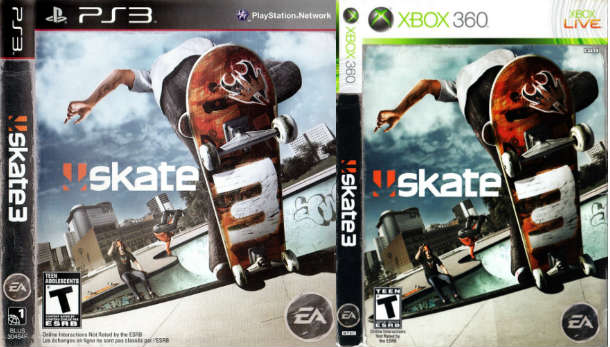

Your back aches, you fall, your shoes get destroyed. Anyone who has ever spent an afternoon on their driveway, skateboard under their feet, knows how frustrating it can be to learn a new trick. What’s even more impressive is the way that Skate 3 encourages mastery. It sounds silly to say that a video game from 2010 understood the nuances of how skateboarders make their boards flip and spin with seemingly such little effort, but trust me, it’s impressive. If you’ve never done a kickflip in real life, it’s difficult to image what it really feels like, but rattling one off in Skate 3 is about as close as it gets.Įvery subtle movement required for each different trick was a blueprint for its real-life counterpart.The downward diagonal drag, clockwise roll, and delicate push up once again is a distillation of how a 360 flip works in real life. It was a cipher for the actual movement of a skateboarder’s foot, and a damn near perfect one at that. In Skate 3, you had to delicately trace the right analog stick before flicking it upward and launching into the air.

Lone gone were the face-button combos of THPS. The game’s best feature was how naturally it controlled compared to a real skateboard. Instead, it encouraged players to escape into Port Carverton and have some fun.īut Skate 3 isn’t just important for how it gave players a city absolutely littered with unique places to skate. Unlike the Skate games before it, Skate 3 dropped much of the security measures that made accessing many of the most desirable spots difficult. Better than any other game about skateboarding, Skate 3 understood the defiant nature of destroying public property as a creative outlet and the feeling of being an outsider that comes with a willingness to drop everything on a whim to go ride a piece of wood around the streets. It understood what it’s like to look at your surroundings in hopes of finding something new to skate. The openness of Skate 3‘s city encouraged players to think like a skateboarder. Though discreet representations of the kinds of “spots” found in most major cities, Port Carverton’s districts came together as one cohesive unit where players had everything they could ever want to skate and more. Downtown blended old-city bricks with modern art installations for a fusion of big handrails and obstacles that challenged a skater’s creativity.
#Skate 3 xbox one tricks full
The Industrial District is crusty, full of DIY parks and concrete ditches. The University District is home to buttery smooth ledges and backyard pools. But if you took a look at Port Carverton’s three districts with a skateboarder’s eye, the city took on a new life.

Compared to the fictional cities found in most video games, it was just a mashup of architectural influences and public plazas. It was a game about exploring every inch of a city and charging at its architecture in hopes of finding a great new spot to skate.Īt first, Port Carverton didn’t look all that special.
#Skate 3 xbox one tricks pro
Unlike the Tony Hawk’s Pro Skater games and their distillation of skateboarding into high flying airs and circus-like antics, Skate 3 represented the raw appeal of skateboarding. Skate 3 did this too, building upon the realistic approach of its predecessors and tweaking how it controlled in a effort to create a simulation of skateboarding that captures both its challenge and defiant spirit. Each new generation of skateboarders has iterated upon the tricks and styles of those that came before them. Skateboarding has grown a lot over the last few years. Port Carverton is a playground pretending to be a city that’s been molded into a skateboarder’s digital paradise. It is, however, a perfect game about skateboarding. I’m stoked about this, because now I finally have a reason to invest in an Xbox One. The combination of badly-worn analog sticks and memory-driven control comes from the hundreds of hours I spent cruising around Port Carverton in Skate 3.Įarlier today, news broke that Skate 3 would be playable on the Xbox One thanks to the system’s backward compatibility program. But when I turn my brain off and react to what’s on the screen, those aging analog sticks work like a dream. By any metric, my controller is terrible to use. When I apply pressure to it, the stick crashes towards whatever direction I’m pointing. The right stick drifts upwards, slowly and surely, without a thumb to guide it. They’re loose and unruly to an absurd degree. The analog sticks on my PlayStation 3 controller refuse to stay in place.


 0 kommentar(er)
0 kommentar(er)
